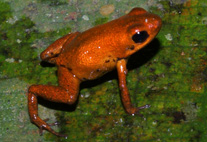Abstract
The black-faced uacaris are a poorly known group of platyrrhine monkeys from the Rio Negro basin in northwestern Amazonia. Originally described as two distinct species—Cacajao melanocephalus (Humboldt 1812) and Cacajao ouakary (Spix 1823)—from opposite banks of the Negro, they were treated as a single species until the end of the twentieth century, when molecular studies reconfirmed their status as true species. One of these studies not only nominated a third (northern) species, Cacajao ayresi Boubli et al. 2008, but also identified C. ouakary as a junior synonym of C. melanocephalus, resulting in the introduction of a new nomen, Cacajao hosomi Boubli et al. 2008. In the present study, additional evidence on morphological and zoogeographic variables is analyzed, which indicates that C. ouakary should be reinstated, and supports the nomination of a neotype of C. melanocephalus. The molecular and zoogeographic data on the species status of the ayresi form are also re-assessed, leading to the conclusion that, on the basis of the evidence available at the present time, this form should be considered a subspecies of C. melanocephalus. A new taxonomic arrangement is proposed, which recognizes two species, C. ouakary and C. melanocephalus, the latter with two subspecies, C. m. melanocephalus and C. m. ayresi.

